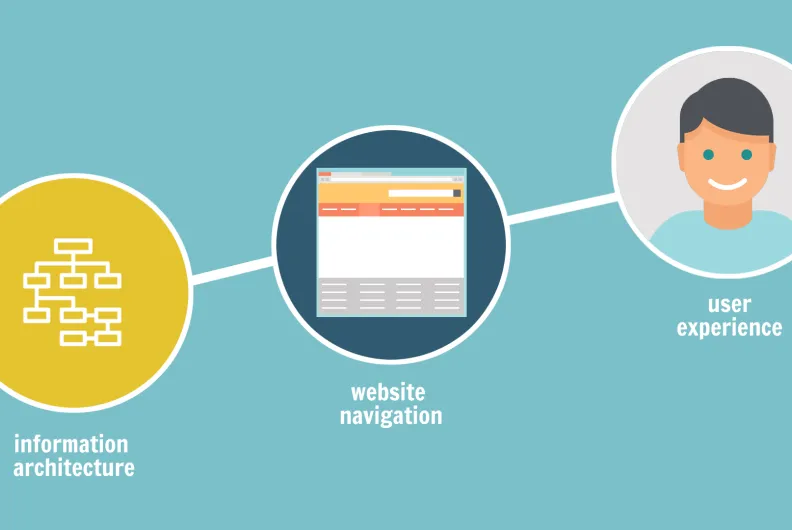Information Architecture: What It Is and Why It Matters
While it’s true that a website’s navigation and information architecture are related, they are not the same. Information architecture informs website navigation, but its scope extends further beyond. You can think of a website’s navigation as the visible part of the information architecture iceberg above water, with its foundation reaching far below.
Navigation
How we navigate a website is essential to our online experience, but it’s unlikely that we give it much thought or consideration. But if a user were to ask you why your website’s navigation was organized the way it was, how would you respond? A website’s navigation is the centralized collection of links in its user interface that allow a user to access its content. It can be divided up into multiple groups, such as global, local, contextual, and hierarchical and a well-designed navigation will provide order and structure to your website.Information Architecture -- What Is It?
Similar is your website’s information architecture. Information architecture “is the structural design of your information, and includes the art of organizing and labeling items to insure usability and findability.” Or as the Information Architecture Institute explains, “information architecture is about helping people understand their surroundings and find what they’re looking for, in the real world as well as online.” In other words, “information architecture is the creation of a structure for a website, application, or other project, that allows us to understand where we are as users, and where the information we want is in relation to our position. Information architecture results in the creation of site maps, hierarchies, categorizations, navigation, and metadata.”And How Do We Design It?
Designing an information architecture requires us to ask questions like:- How will users flow through this website?
- How does the application help users collect and catalogue their information?
- How is that information presented back to the user?
- Does that information help the user?
- Does that information help to drive decision-making in the user?
- Identification and definition of content and functionality; and,
- The underlying organization, structure, and naming convention that defines the relationships between them.
“We began by looking into traffic stats. Investigating heat maps for our navigation was also useful. Then think through your user flow and personas. Where do you want your visitors to go? What are the more valued sections of your site? When re-evaluating, look for areas of consolidation. Are these two sections enough alike that they should really be one section? Such as products and services, they can be two separate sections or one section, our decision was based on if it was what we sold to a customer they belonged together. Also look for areas of clarity. Can you, rename a section so that it is more obvious for the user? The key is to be simple and clear.”Finally, the tasks that you will likely undertake in the design of your information architecture will likely include:
- Content inventory -- locating and identifying a website’s existing content;
- Content audit -- evaluation the content’s usefulness, accuracy, tone of voice, and overall effectiveness;
- Information grouping -- defining the user-centered relationships between that content;
- Taxonomy development -- defining a standardized naming convention to apply to all of the website’s content; and,
- Descriptive information creation -- defining useful metadata to generate “Related Link” lists or other navigation components that aid in discovery.







